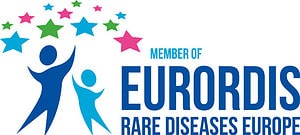In order to diagnose whether or not you or your child has mitochondrialRelated to the mitochondria. disease, sometimes health care providers must do tests on muscle tissues that have many mitochondria located in it.
About Muscle Biopsy Testing – A small piece of muscle, usually the size of the end of our little finger is removed from the upper thigh of a patient for this testing. (The removal of this small piece of tissue does not cause permanent damage to the patient but does leave a scar several inches long.)
The testing completed on this muscle tells us whether or not a certain person can produce enough energy to function normally or whether or not he/she has a problem making too little energy. The testing is complicated and takes many weeks to complete.
Test Results – If the testing indicates that a given patient does indeed have a mitochondrial disorder, that person is then screened every year for many associated problems found with these diseases (such as diabetes and thyroid disease). This helps prevent many treatable complications.
Treatment of mitochondrial disorders is centered around vitamin, supplement and co-factor therapy which improves mitochondrial function, and helps reduce symptoms in many patients. Nutrition, hydration, and energy conservation are also critically important!
Why a muscle biopsy?
Although more forms of mitochondrial disease can now be detected by simple blood tests, avoiding the need for a biopsy, a number of patients still may require a close look at their energy-producing pathways in the muscle. Special studies on muscle tissue have long been the standard for investigating mitochondrial or other metabolic myopathies.
To look closely at the energy-producing pathways, tissue rich in mitochondria is needed. The tissues that house the most mitochondria are the brain, kidney, liver, heart, and skeletal muscle. Muscle tissue is usually chosen. The mitochondria are removed from the muscle tissue and studied. Through the biopsy, a physician can tell whether you make energy as well as normally expected.
What are the steps with a biopsy?
The following is an example of the steps that typically occur when a geneticist is involved:
- You will come to a geneticist who specializes in mitochondrial/metabolic disorders by a referral from your primary physician or a neurologist or by locating one yourself.
- The geneticist reviews your records and any testing done prior to recommending a biopsy.
- If a muscle biopsy is warranted, the geneticist coordinates with the surgeons and labs.
- The surgeon and labs work with you and your insurance company regarding coverage approval.
- The labs report their findings to the geneticist.
- The geneticist interprets and compiles the results into a report that should be understandable to you and your primary physician.
- The report will be shared with physicians you have requested to receive a copy.
- Most geneticists will contact you directly with the results.
Are there other less invasive and less costly tests that may rule out the need for a biopsy?
It is rare a biopsy is the first course of action. Completing some tests FIRST may circumvent the need for an invasive and costly procedure. A chromosomeA chromosome, as found in the nucleus of animals and other eukaryotes, is a thread-like structureconsisting of a long single strand of DNA that is coated with proteins, mainly of the kind called histo microarray study may be warranted if you have other neurological issues, including development or learning problems, seizuresEpisodes of abnormal electrical activity in the brain., etc. A simple blood draw for DNA testing may negate the need for a biopsy.
Even if a muscle biopsy is required, some tests may be performed in a stepwise approach that could drastically reduce costs. Essentially, perform Test A before Test B, since if Test A determines there is an abnormality, there may be no reason for Test B.
Fresh vs. Froze muscle biopsies
In most cases, a frozen muscle biopsy will be as accurate as a fresh biopsy.
Complex 1 is the most commonly affected component of the energy-producing pathway resulting in mitochondrial disease. Data comparing fresh vs. frozen samples showed that while Complex 1 activity was at times more robust in fresh samples, the end results were otherwise comparable, indicating the frozen samples were just as likely to diagnose a patient with a mitochondrial disorder as a fresh.
What information may I expect from a muscle biopsy?
Expect easy to understand results. The report should clearly state if you do or do not have a mitochondrial myopathy.
The muscle obtained at your biopsy is typically used for histological/histochemical studies and enzymology. The histology studies look at the general structure of the muscle tissue and for the presence or absence of compounds and chemicals that provide clues to the “health” and function of the muscle tissue. These findings can be helpful if they confirm abnormal DNA or enzyme testing, but be aware that these studies can come back as normal even in patients who are ultimately proven to have a mitochondrial disease.
How will a biopsy help me?
A biopsy can help to confirm or rule out a diagnosis. A diagnosis tells you the cause of your disease and how to treat it. It provides an understanding of what this means for you over time as well as the impact on other family members. A diagnosis enables you to enter into research or clinical treatment.
What is the cost of a muscle biopsy?
Muscle biopsies are expensive. Frozen biopsies are far less expensive than fresh biopsies. Costs can range from several thousand dollars to tens of thousands of dollars. The price tag includes surgical and anesthetic costs and actual testing fees. Although much of it may be covered by your insurance, typically there are out-of-pocket expenses. Be aware that:
- Pre-approved does not mean you are not financially responsible: You may become financially responsible for a significant portion even though your insurance “pre-approved” the biopsy. Carefully review the forms you sign. Ask questions to learn what your responsibilities are and what the provider’s responsibilities are.
- There are factors that can impact what you may be responsible for, including: Whether the lab is under contract with your insurance; if there will be add-on testing the lab or provider orders AFTER the biopsy has been pre-approved with your insurance (you may be unaware of these add-on tests until it is too late); testing or procedures that are not covered but billed for by the provider; insurance filing mishaps.
- Lifetime insurance caps play a role: Even if your insurance company covers the cost of a biopsy, lifetime caps on insurance expenditures can add up over the years.
What are my options to reduce the cost of a muscle biopsy?
One of the simplest ways to reduce costs is to have only the testing you need to help diagnose your case. You can insist mitochondrial testing be done in a stepwise fashion on frozen samples unless there is a compelling reason to do otherwise.
Step 1. Histological and histochemical muscle studies should be completed on collected tissue.
Step 2. Review the histology results with your primary physician before moving forward with more testing.
Step 3. Mitochondrial enzymology should be completed or other enzyme testing done if another metabolic myopathy is considered.
Step 4. Review the enzymology results with your primary physician before moving forward with additional DNA testing.
Does the provider ordering the mitochondrial testing have any conflict of interest?
Some physicians do have an interest in the testing they order as they may:
- have ownership, stock, or a financial interest in surgical centers, hospitals, or laboratories;
- receive financial incentives from pharmaceutical or biotech companies;
- have research grants;
- have other arrangements that are linked to your care.
Most physicians will remain open and honest about these conflicts of interest; request full disclosure.
Important questions to ask your provider when considering a muscle biopsy
- Why is a biopsy recommended?
- Why not perform less costly and less invasive tests first and then proceed with a biopsy? There should be a compelling, understandable reason to bypass available tests that can rule out a biopsy.
- Will I be provided a sample biopsy report so I know what to expect?
- Who will contact me with the results? Most geneticists will contact you directly, especially if the results and abnormal.
- When should I expect the results?
- Do you have any financial or research incentive to the types or number of tests you order?
- What is the ratio between the number of patients you see and the number on whom you request biopsies?
- Can you provide in writing the cost of a muscle biopsy and what is included?
- What factors will impact the cost of the biopsy?
- What factors will impact my out-of-pocket expenses for the biopsy? Historically, what dollar range have you seen patients become responsible for?
- If additional testing or procedures are required after you gain pre-approval from my insurance company, will I be held financially responsible for these costs?
- Will you provide me with all the consent forms before my appointment so I may review them?
- Will you provide in writing if any remaining biopsy material exists? You have the right to know if there is any genetic material remaining after your biopsy, but you will need to request the information since it is not standard practice to include it in the biopsy report.
- Will you provide in writing how I can have my remaining biopsy material released to another facility for storage? You have the right to unrestricted access to your remaining genetic material, unless you have signed documents to the contrary. Storing your muscle biopsy material prevents unwanted research on your genetic material. The lab should provide in writing the procedures to release tissue or samples upon your request, their turnaround times to release samples, and the fees. Find out how your tissue/sample will be stored and how long the lab holds onto it.
- Who has control over my genetic material and how may they use it?
- Do you conduct research? In writing, you should always have the right to opt out of research without concern over how it may impact your care.
- Do you have research incentive to the types or number of tests you order?
- What controls are in place to safeguard my genetic material and genetic data from unwanted research if I choose not to be included in research? You should have the right in writing to opt out of and sequester/secure your genetic material from research without concern.
- What do I have to do if I consent to be included in research at one point, but at a later date wish to be excluded from research? You have the right to withdraw from research at any point. Get clear instructions on how to withdraw in the documents you sign.










